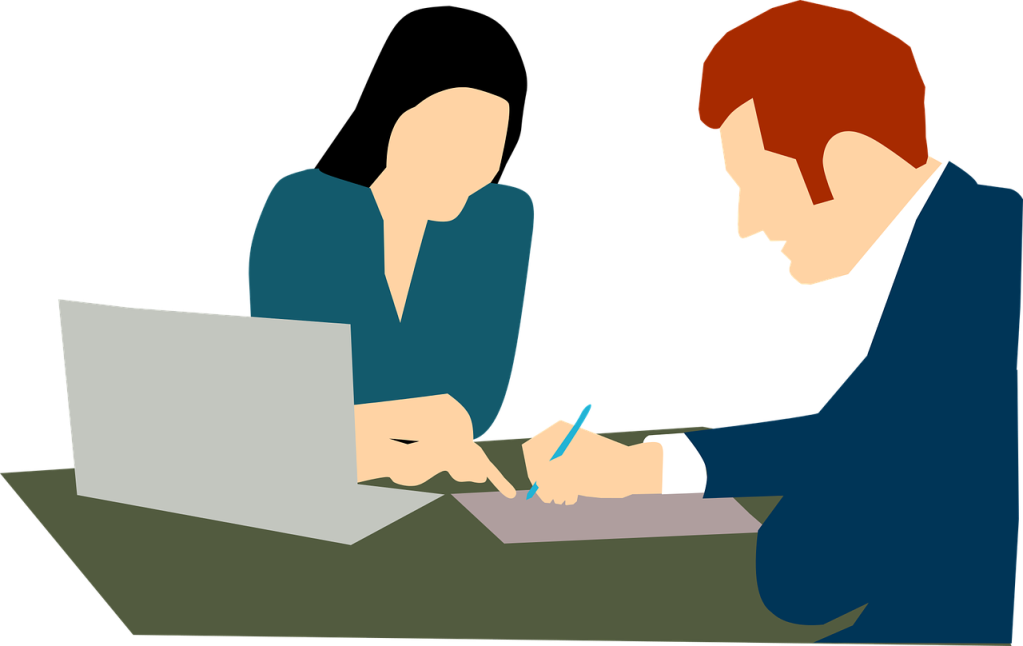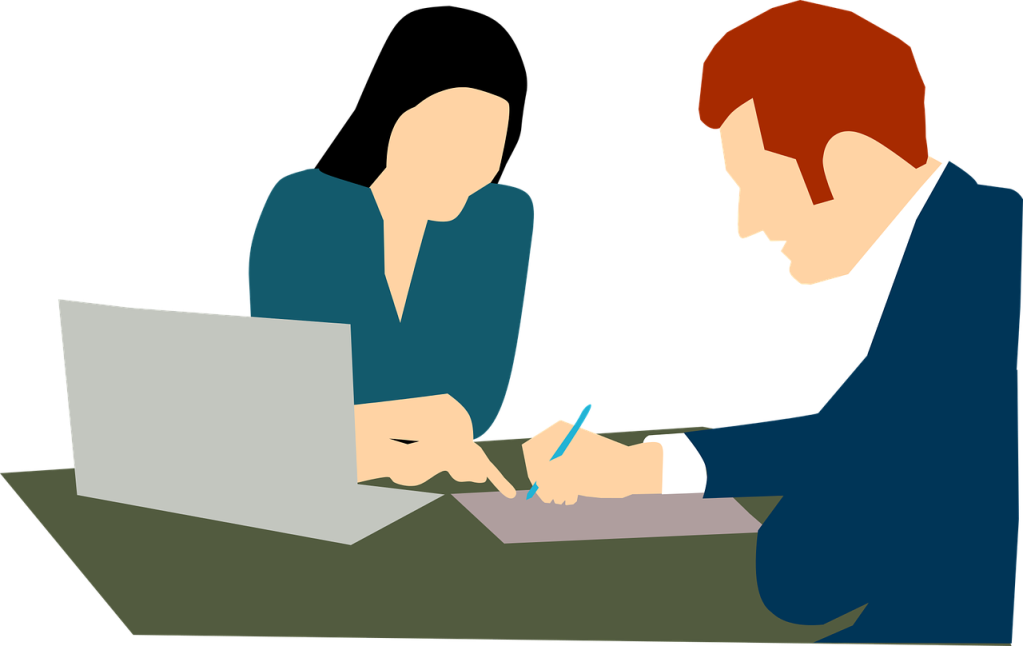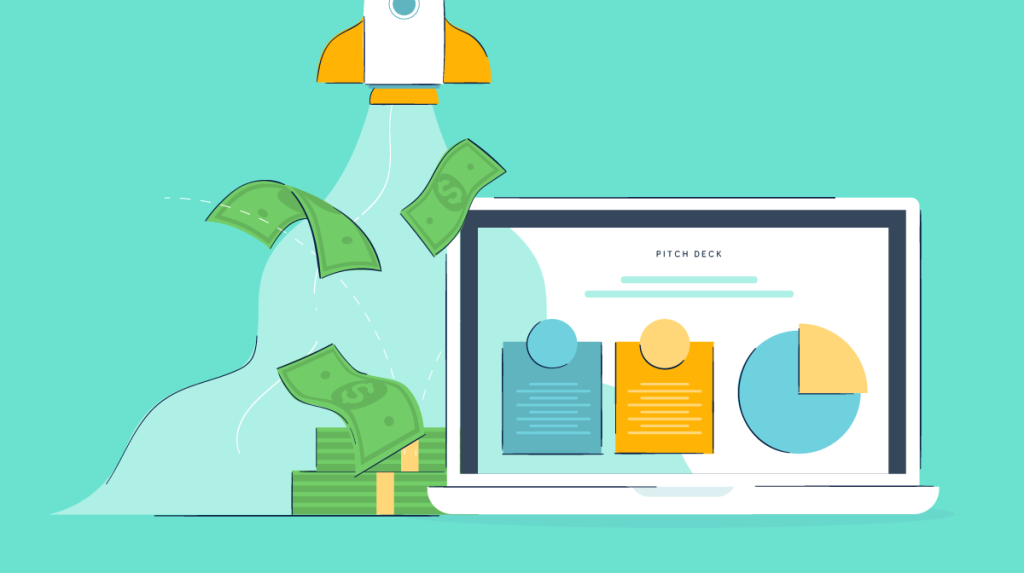Running your personal finances like a business will help you get organized, reduce stress and ensure you’re prepared for whatever the future holds.

Step 1 – Create Your Income Statement
Step 2 – Create Your Balance Sheet
KISS
Keep it simple, stupid.
These famous words were first uttered by the U.S. Navy in 1960. The KISS principle states that most systems work best if they are kept simple as opposed to being complicated. This may seem like an obvious truism, but far too many systems in our lives get over-engineered over time and become confusing and useless.
Take personal finance for example.
From self-help books, to academic papers to financial ‘experts’ blabbering nonsense on Twitter and TV, personal finance has morphed from basic arithmetic to advanced calculus. But if you can do basic arithmetic and block out the noise, personal finance can and should be super easy.
This post is not intended to be all-encompassing when it comes to your personal finances. But it will serve as a starting point to get you on the right path. No confusion, no BS and nothing to sell. Just a simple, easy-to-follow framework that you can pencil on a napkin.
Step 1 – Create Your Income Statement
The first step is to get visibility to your current financial situation by creating your personal income statement. You shouldn’t think ahead to retirement planning or specific investment opportunities until you nail the basics.
Also called a profit and loss statement, an income statement shows how much money a company has made (or lost) over a specific time period of time. We realize you’re a person and not a company, but the exact same principles apply. Just like a business you need to understand how much money you make, and how much money you spend.
Income
Your income statement will start with your, take a guess, your income. This step is fairly straight forward but a few items to point out.
First, make sure you input your net income as opposed to your gross income. Net income is your actual take home pay after taxes and other deductions. So if your gross salary is $60k per year that would be $5k per month. After 30% in taxes and payroll deductions your net W2 paycheck is $3.5k per month. That is the amount you want to use.
Second, make sure to include any other income you might generate each month. For example, if you do design work on the side make sure to include your monthly net pay for side work and the net income from any investments or other income.
And third, it’s important to use a fixed time period. In our case the time period we’ll work from will be monthly because that’s the easiest way to track your income and expenses.
Now what we’ve covered the basics here is what the income section of your personal income statement should look like. We also add a Notes column to help you keep track of changes.
| 1. Income | Monthly | Notes |
| W2 Wages | $3,500 | |
| 1099 Income | $400 | |
| Other Income | $100 | |
| Total Income | $4,000 |
Fixed Expenses
Once you dial in your income, the next section to tackle are your fixed expenses. These are expenses that you have every month and generally stay the same month-after-month.
For example, your mortgage or rent is a common, monthly fixed expense, so we’ll start there. Other common fixed expenses are insurance, utility bills and wireless bills.
One small nuance is that some bills, like rent, are exactly the same each month, your electric bill will change month-to-month. The best way to account for expenses that change is just use the 12-month average. Most of the time your utility or cable bill will show your last 12 month expenses and you can pin down the average.
| 2. Fixed Expenses | Monthly | Notes |
| Mortgage or Rent Payment | $1,250 | |
| Property Taxes | $250 | |
| Homeowners or Renters Insurance | $75 | |
| Umbrella Insurance | $20 | |
| Car Loan | $200 | 12 months left |
| Car Insurance | $75 | get a new quote |
| Student Loans | $250 | |
| Electric Bill | $40 | |
| Gas Bill | $30 | |
| Cable Bill | $75 | |
| Wireless Bill | $85 | |
| Total Fixed Expenses | $2,350 |
Variable Expenses
The next section is to account for your monthly variable expenses. These are expenses that change every month or you may not have every month. For example, you will most certainly buy groceries every month but the amount will vary each month.
And if you travel during the year there will be some months you buy flights and hotel rooms, and others where you spend $0 on travel. For these expenses, use the same method as your fixed expenses and provide an average for the year.
In this example, we assume spending $3,600 per year in groceries, or $300 per month. These variable expenses can be estimates but it’s best to look at your bank and credit card statements to see how much you actually spend each month.
And one final tip as it relates to variable expenses, you’ll want to review these each month to get as accurate an account as possible.
| 3. Variable Expenses | Monthly | Notes |
| Groceries | $300 | |
| Dining Out | $100 | keep an eye on this |
| Gas | $50 | |
| Travel | $100 | |
| Misc. (clothes, gifts, etc.) | $100 | |
| Total Variable Expenses | $650 |
Putting it All Together
Now that you’ve pinned down your 1. income 2. fixed expenses and 3. variable expenses your personal income statement is 99% complete. Now you just need to do a little bit of subtraction and voilà, you have a complete personal income statement!
Total Income – Fixed Expenses – Variable Expenses = Net Profit / Loss
| 1. Income | Monthly | Notes |
| W2 Wages | $3,500 | |
| 1099 Income | $400 | |
| Other Income | $100 | |
| Total Income | $4,000 | |
| 2. Fixed Expenses | Monthly | Notes |
| Mortgage or Rent Payment | $1,250 | |
| Property Taxes | $250 | |
| Homeowners or Renters Insurance | $75 | |
| Umbrella Insurance | $20 | |
| Car Loan | $200 | 12 months left |
| Car Insurance | $75 | get a new quote |
| Student Loan | $250 | |
| Electric Bill | $40 | |
| Gas Bill | $30 | |
| Cable Bill | $75 | |
| Wireless Bill | $85 | |
| Total Fixed Expenses | $2,350 | |
| 3. Variable Expenses | Monthly | Notes |
| Groceries | $300 | |
| Dining Out | $100 | keep an eye on this |
| Gas | $50 | |
| Travel | $100 | |
| Misc. (clothes, gifts, etc.) | $100 | |
| Total Variable Expenses | $650 | |
| Total Expenses | $3,000 | |
| Net Profit / Loss | $1,000 |
Obviously you want to spend less than you make and you should have a net profit each month. Now, if you find that you have a net loss (spending more than you make) you need to immediately see where you can trim expenses to get into positive territory. The starting point of financial freedom is making more than you spend.
Step 2 – Create Your Balance Sheet
So by this point you should have a clear understanding of how much money you make, how much money you spend and how much money you save (or lose) each month.
The second step in your personal finance journey is to create a personal balance sheet. A balance sheet is simply a snapshot at any given point in time that shows a company’s assets, liabilities and equity. In layman’s terms a balance sheet is a list of stuff you own and what you owe.
Assets
Assets are simply things that you own. The biggest and most common asset for most Americans is their house. Other common assets include savings accounts, retirement accounts valuables and personal items.
All you need to do is create a list of all of your assets and write down the value for each. For this example we used December 31st as the date, so you would put down the value of each assets on that date. Obviously you can choose any date but we recommend using a month-end or beginning to keep things organized.
| 1. Assets | December 31 | Notes |
| Checking | $5,000 | |
| Savings | $15,000 | |
| I-Bonds | $30,000 | |
| 401(k) | $125,000 | |
| Car | $25,000 | |
| House | $400,000 | |
| Personal Items | $25,000 | |
| Total Assets | $625,000 |
We recommend listing your assets from most liquid to least liquid. Liquid assets can be easily converted to cash with little impact to the overall value. So in the example above, your checking account is the most liquid because it is cash. And as you move down the list your car, house and personal items are the least liquid.
Most of your assets are straightforward and have an exact value. For example, you can see your current checking account balance at any time. However, the value for some other items, like your house, may take a bit more creative work.
For your house, the most conservative value is what you paid for it, but if you’ve lived in the same house for a decade the value has almost certainly increased. An easy way to get a ballpark value for your home is to use an online home estimator like Zillow or Realtor.com or Redfin. These figures aren’t exact, but at least provide an estimate. Another trick to find your home’s value is to ask a realtor. So if you have an aunt or neighbor you trust, you can ask them what they think your house might sell for.
And if you own your car, the same rules apply. What you paid is a good estimate but if a few years have passed you can use online price estimates from Kelly Blue Book, Edmunds or Autotrader to get an updated value. Unlike your home, there is a good chance that as time passes the value of your car will actually decrease, so don’t be surprised if the estimate values are less than what you paid. And, if you lease your car, then do not include it as an asset.
Personal items as assets range widely from person to person. Some young people might only have a 50 inch TV and a futon to their name, while more established savers might own art, jewelry and other valuables. For each case you’ll have to use your best judgement to determine their value. Just keep in mind that being honest with yourself and conservative is the best strategy. One trick is to ask yourself, “If I sold this today what would I get for it?”
Liabilities
Once you’ve pinned down your assets it’s time to list out your liabilities. Liabilities are things that you owe. The most common liabilities are credit card debts, mortgages and home equity loans.
And just like your assets, we recommend listing them in order of most liquid to least liquid. This is not quite as straightforward as your asset but an easy way to think about it is what do you owe the soonest to the latest. So in the example here, you would need to pay your credit card each month (most liquid) and your mortgage probably isn’t due for 10-30 years so it would be at the bottom (least liquid).
| 2. Liabilities | December 31 | Notes |
| Credit Card | $5,000 | pay this off |
| Car Loan | $10,000 | |
| Home Equity Loan | $50,000 | refi into mortgage |
| Student Loans | $75,000 | |
| Mortgage | $250,000 | |
| Total Liabilities | $390,000 |
Putting it All Together
Just like your personal income statement, your balance sheet is 99% done, now you just need to combine your assets and liabilities in order to figure out your net worth.
Assets – Liabilities = Net Worth
| 1. Assets | December 31 | Notes |
| Checking | $5,000 | |
| Savings | $15,000 | |
| I-Bonds | $30,000 | |
| 401(k) | $125,000 | |
| Car | $25,000 | |
| House | $400,000 | |
| Personal Items | $25,000 | |
| Total Assets | $625,000 | |
| 2. Liabilities | December 31 | Notes |
| Credit Card | $5,000 | pay this off |
| Car Loan | $10,000 | |
| Home Equity Loan | $50,000 | refi into mortgage |
| Student Loans | $75,000 | |
| Mortgage | $250,000 | |
| Total Liabilities | $390,000 | |
| Net Worth | $235,000 |
In this case the example net worth is $235k. That essentially means that if this person sold all of their assets for cash and paid off all of their liabilities they would be left with $235k in cash.
Ideally you will have a positive net worth but if you fall into the negative don’t panic!
It’s common for young professionals or grad students to have a negative personal net worth. It’s nothing to be ashamed of. For instance, if you just graduated and started your career you probably rent an apartment, have have student debt and very little savings, so naturally your student debt would cause your net worth to be negative. That’s okay, but the key is to manage your debt and continue to save (income statement) so you can build your assets (balance sheet).
And if you’re on the other end of the spectrum and nearing retirement, you should have a significant net worth based on years of saving, paying down debts and growing your money through investment.
The point is your personal net worth is not a competition or pass/fail exam, but simply a tool to help you plan.
Step 3 – Establish Your Goals
So to recap, at this point you’ve created your personal income statement and balance sheet.
Your income statement helps you see your income, expenses and monthly savings. It’s a measure of how much money you have coming in and going out.
Your balance sheet shows you what assets (savings) you own and what liabilities (debts) you owe. The net result being your net worth.
Where you are > Where you want to be
Now that you have a better idea where you are financially, it’s time to establish where you want to be.
Everybody is different, so your financial goals and desires will be unique to you and your family. Some people are extremely ambitious, others want a more simple life. Some folks love to save and want the security of a nest egg, others want to live life to the fullest. So when it comes to setting financial goals, there is no wrong answer, but having no plan is unacceptable.
Top 15 Most Important Personal Financial Goals
Your goals are just that, yours! But to get you started, we wanted to share a list of the top 15 personal financial goals based on a survey of 1,000 respondents.
| Rank | % | Goal |
| 1 | 20% | Buying my own house or apartment |
| 2 | 19% | Having enough saved so I can finally retire |
| 3 | 14% | Paying off credit card debt |
| 4 | 10% | Building an emergency fund |
| 5 | 7% | Paying off my student loan debt |
| 6 | 6% | Building my credit score |
| 7 | 5% | Having enough saved so I can move out on my own and rent a home/apartment |
| 8 (tie) | 4% | Buying a car |
| 8 (tie) | 4% | Paying off other forms of debt not including student or credit card debt |
| 9 (tie) | 3% | Creating a retirement account |
| 9 (tie) | 3% | Start a business |
| 10 | 2% | Investing in the market outside of my retirement account |
| 11 (tie) | 1% | Buying a second home |
| 11 (tie) | 1% | Investing in real estate |
| 11 (tie) | 1% | Buying a second or third car |
Once you decide on the top 3-5 goals that matter to you most, the next step is to clearly define those goals. To illustrate, let’s say you want to buy a house, save enough for retirement and pay off your credit card debt. Here is how you would prioritize and define those goals.
- Pay off credit card debt – This would be the first goal because you would want to pay off high interest credit card debt before getting a home loan or saving for retirement. Assuming you have $5,000 in credit card debt, like our example above, and your net income each month is $1,000, then it would take 5 months to pay off your credit card debt.
- Buying a house – Once you’ve paid off your high interest credit card debt, you can start saving for a down payment on a house. And let’s say you have your eye on a house that costs $125k. In order to get the best rate, and to avoid PMI, you want to put down 20%, which is $25k. Using the same logic as the credit card example, you would save $1k per month so in 25 months (just over two years) you would have enough for a down payment.
- Saving for retirement – And finally, the long-term goal everybody strives for, retirement! Retirement is a far more complex goal because you’re looking at decades of saving, spending, investing and planning. The best solution here is to hire a professional but for illustrative purposes let’s say you need $1 million to retire. And if you save $1k per month it would take you 1,000 months or 83.3 years to save $1 million! But don’t despair because you will invest your savings over time and it will grow and as you advance in your career your savings will increase over time. Again, that’s why it’s best to seek out a financial advisor to guide you toward retirement.
Yep, there’s an App for That
So we’ve given you the framework to create a personal income statement and balance sheet to track your progress. We’ve also provided some examples of goals and budgets you can set up on your journey. But how to do you actually keep track of all this?
You can obviously write it down on a piece of paper or in a journal, nothing wrong with that. You can also just open an Excel spreadsheet on your computer and keep track that way.
But if you want a way to track automatically there are a bunch of reputable, highly rated personal budgeting apps that might be a fit.
Some of these apps are free, while others charge a small monthly or annual fee. The most important thing is to choose an app that works for you and that you’ll actually use!
Hiring a Professional
If you find yourself overwhelmed or simply want a second opinion, hiring a professional is a great idea. In fact, even if you’re a sophisticated investor, having a financial advisor can help you plan and stay on course. Sort of like a personal trainer!
A financial advisor (FA) is a licensed professional who can help you establish your goals, set budgets and plan for retirement. When looking for an FA there are some key criteria to keep in mind.
Are They with a Reputable Firm?
Financial advisory firms comes in alls shapes and sizes. Some of the most recognized are Schwab, Edward Jones, Morgan Stanley and Fisher Investments. There are also regional firms and local firms that are equally reputable and might be a good fit for you.
When evaluating a firm you want to consider how many clients they have, what their assets under management (AUM) are and how they charge for services.
Many advisory firms charge a percentage of your investment, so if you don’t have a lot of money it’s not a big deal, but as your investments grow you’ll be charged more. There are new firms out there that charge fee-only for services, so a fixed amount each month to help you. Just make sure to ask about how they charge and if there are any hidden fees or charges.
Do they Have Solid Credentials?
Professional financial advisors must be licensed in order to provide financial advice. In addition to licensing, many financial advisors have designations to certify their knowledge with regard to financial planning. There are a half-dozen designations but the one you want to look for is a a CFP® or Certified Financial Planner. The CFP designation is awarded by the Certified Financial Planner Board of Standard, or CFP Board for short and it is the gold standard when it comes to financial advisor designations.
Another benefit of hiring a CFP is that you’re also getting a fiduciary. A fiduciary is a professional who acts in the best interest of their clients. In terms of financial services, that means fiduciary advisors may only buy and sell investments that are the best fit for their clients.
Do You Trust and Like them?
Low fees and prestigious designations are important, but perhaps the most important factor in selecting a financial professional is whether or not you like them!
Just like a doctor or lawyer, you want to choose a financial adviser that you trust, enjoy talking to and feel comfortable sharing your most intimate financial goals.
A Note on Robo-Advisors
A robo-advisor is a type of financial adviser that provides financial advice and investment management online with minimal human intervention. There are a plethora of robo-advisors out there that are legitimate
Call us old-fashioned, but when it comes to managing your personal finances, we strongly suggest using a human as opposed to a robo-advisor. However, as Bob Dylan put it, “The Times They Are a-Changin’.” So if you are more drawn to a robo-advisor, make sure you choose a legitimate options like Betterment, Ellevest, Wealthfront or SoFi.
Summary
Personal finance doesn’t have to be scary or complicated. They key is to organize your income statement and balance sheet so you have visibility to your current situation. Once you have clarity you can set goals and create a plan to get there.
Some of you will do it all on your own, some will hire a professional, there is no right answer. The only thing you can screw up is not putting it off forever or not creating a financial plan at all.
And remember, keep it simple stupid.








Leave a comment